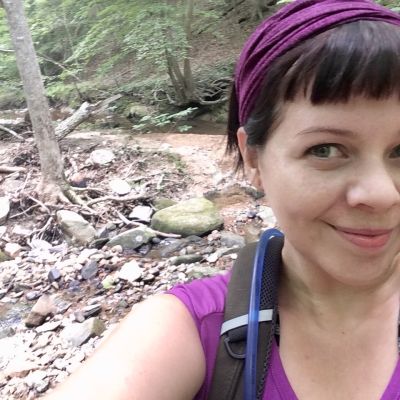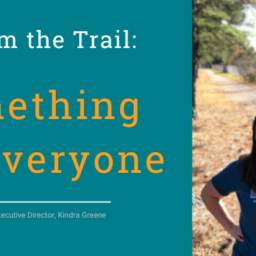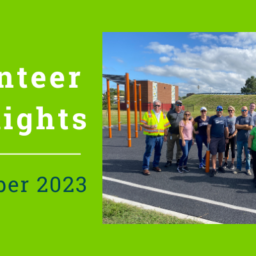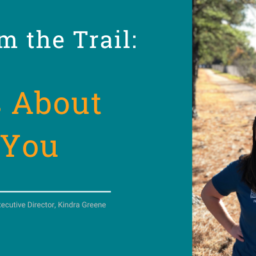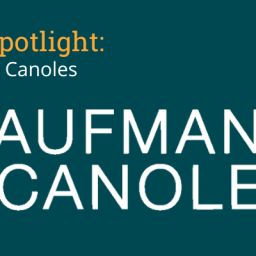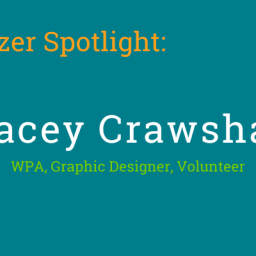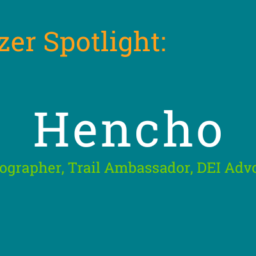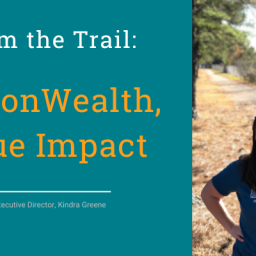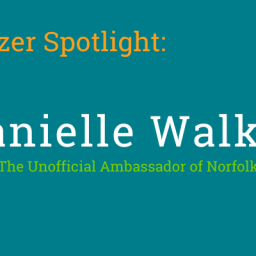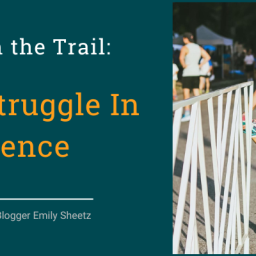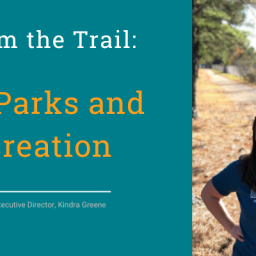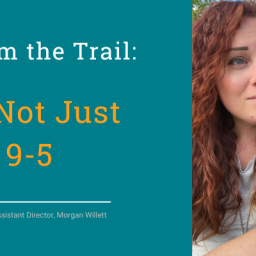You Can’t Step in the Same River Twice
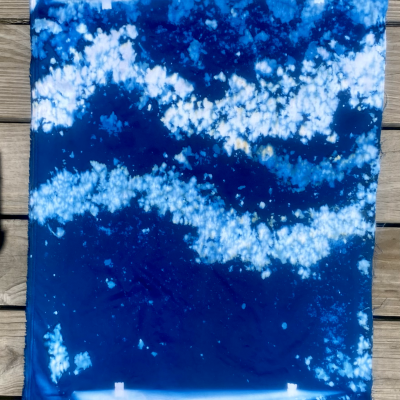
When the Elizabeth River Project issued its call for artists with the theme “all water has a perfect memory,” I immediately knew what I wanted to do: a project involving cyanotypes created on the banks of the Elizabeth River. Cyanotypes are created through a printing process invented in the 1800s that involves placing objects or photo negatives directly on paper or fabric coated with light-sensitive chemicals. When exposed to sunlight and then rinsed and fixed in water, they produce beautiful blue images. I fell in love with this alternative photography process years ago and have loved experimenting with it ever since.
The ancient Greek philosopher Heraclitus said you can never step in the same river twice. That is the perfect metaphor for the process of creating cyanotypes: no two will ever be the same. They are influenced by the season, the angle of the sun, shadows of passing clouds, humidity, the specific concentration of chemicals and how I apply them to the surfaces I’m working with. And I love to boost the unpredictability of the process by increasing the variables: I play with different materials as substrates, deviate from the recommended formula for the cyanotype chemicals, and introduce water, soap, vinegar, ink, and spices during the exposure and development process. I’ve created cyanotypes in collaboration with the ocean, during rainstorms, and in my bathroom.
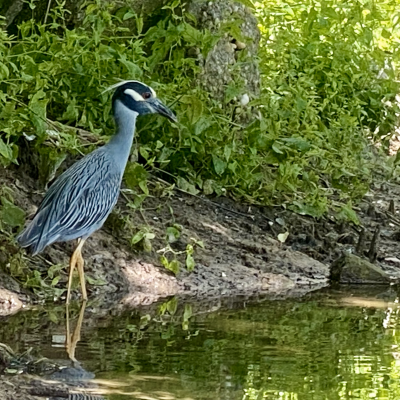
So the call to artists from the Elizabeth River Project immediately sparked ideas, and the ideas became obsessions. I wanted to create a cyanotype series in which the river could remember itself by being physically present in the fibers, textures, and shapes of the images. The sun, water, and natural materials would manifest the river’s memory.
I moved to Williamsburg, Virginia, fairly recently, so I needed advice about where I could best create the vision in my head. Luckily, a friend I met more than a decade ago at a writing conference now happens to be the Executive Director for the Elizabeth River Trail: Kindra Greene. So I dashed off a Facebook message to her with my query: what would be a good location along the river where I would have access to the water and some dead plant matter—long grasses, leaves, dirt. She directed me to the perfect place: Plum Point Park and a lovely little sandy beach next to the kayak launch.
On a blistering hot day in June, I set out to the river to create art. I brought several large pieces of fabric coated with cyanotype chemicals, a map of the Elizabeth River I had drawn on a large sheet of clear acrylic, and a patient, kind friend who was visiting from Utah and got pulled into my cyanotype-making scheme.
It was a frenzied, fun process: as soon as the treated fabric makes contact with sunlight, it begins to transform, so I had to move quickly. I’d pull a sheet of treated fabric from its light-proof envelope, spread it out on the ground, and begin creating designs with natural elements: sand, leaves, wrack, feathers, wood debris, and more. I used human-made debris I found as well: plastic wrap, chip packages, a drink cup. (I collected and took away all the human trash on my way out.) I also used my hand-drawn map as a negative over some of the pieces, and I experimented with sprinkling the fabric with salt, vinegar, turmeric, and paprika.
I exposed some pieces for only a few minutes, and others for hours, letting the tide creep up over them as time passed. A night heron visited the inlet. A huddle of clouds passed overhead. My friend and I sweated, ate tangerines, and chatted with a few folks who saw us as they passed on the nearby trail. Once I was done exposing each piece, I rinsed the fabric in the water of the river to develop and fix the images into their characteristic blue hue. I let the pieces dry in the sun, and I ended up with a beautiful collection of images that celebrate the river’s form, fluidity, materials, and impermanence.
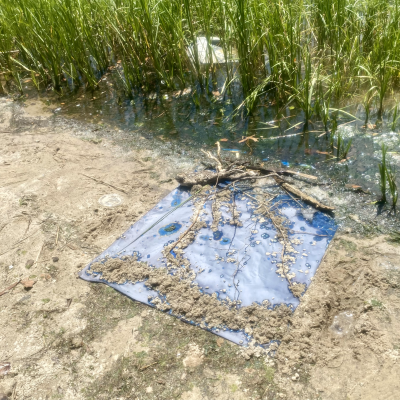
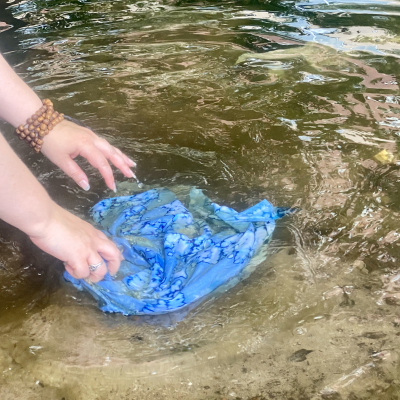

One of my core beliefs is that art can have a profound impact on the world—not just as entertainment or solace, but as an agent for change. Art can be used to raise awareness, evoke emotions, and inspire action. Artists can shed light on environmental issues by creating pieces that draw attention to the beauty of nature, the consequences of climate change, and the importance of conservation. So when I was notified that one of my entries, a diptych called “At the Edge of Remembering,” was selected as the first-place winner for the juried show, I was thrilled and honored. It was exciting and humbling to be a part of this exhibit with incredible artists who are helping foster a deeper connection to our environment and to support the mission of the Elizabeth River Project through my art.
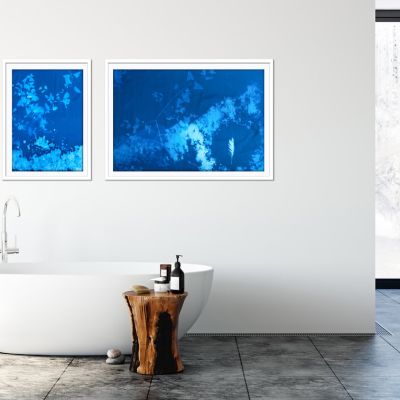
Having access to the river and the beautiful spaces along the Elizabeth River Trail allows this kind of art to happen. And of course these outdoor spaces are vital not just for art, but for our fundamental well-being. Natural spaces in the midst of urban environments serve as sanctuaries. They remind us of the beauty beyond concrete landscapes and offer space for stress relief, connection, and play. The Elizabeth River Project has worked for more than 30 years to restore one of the nation’s most polluted rivers, and the Elizabeth River Trail provides us access to enjoy the scenery, neighborhoods, and landmarks along that now-thriving river. The trail connects neighborhoods, and it connects us to nature and to each other. The Elizabeth River Project and the Elizabeth River Trail both remind us of human resilience, nature’s resilience, and our indelible connection to nature and to each other.

The exhibit will be on display at the Ryan Resilience Lab through May 2024, and all the pieces are available for purchase, with a percentage of the sales supporting the Elizabeth River Project.
About the Artist
For more than two decades, I’ve been a passionate photographer, multimedia creator, nature lover, and conservation advocate. I love experimenting with forms and mediums. From double-exposure photographs to mixed media cyanotypes, my aim is to create art that goes beyond mere documentation—I seek to explore themes of impermanence and beauty, to evoke feelings of awe, joy, and love for our uncertain and resilient world. I believe art can inspire people to protect our planet and its web of ecosystems. My work has appeared in numerous solo and juried joint shows, including exhibits celebrating natural resources and their preservation.
